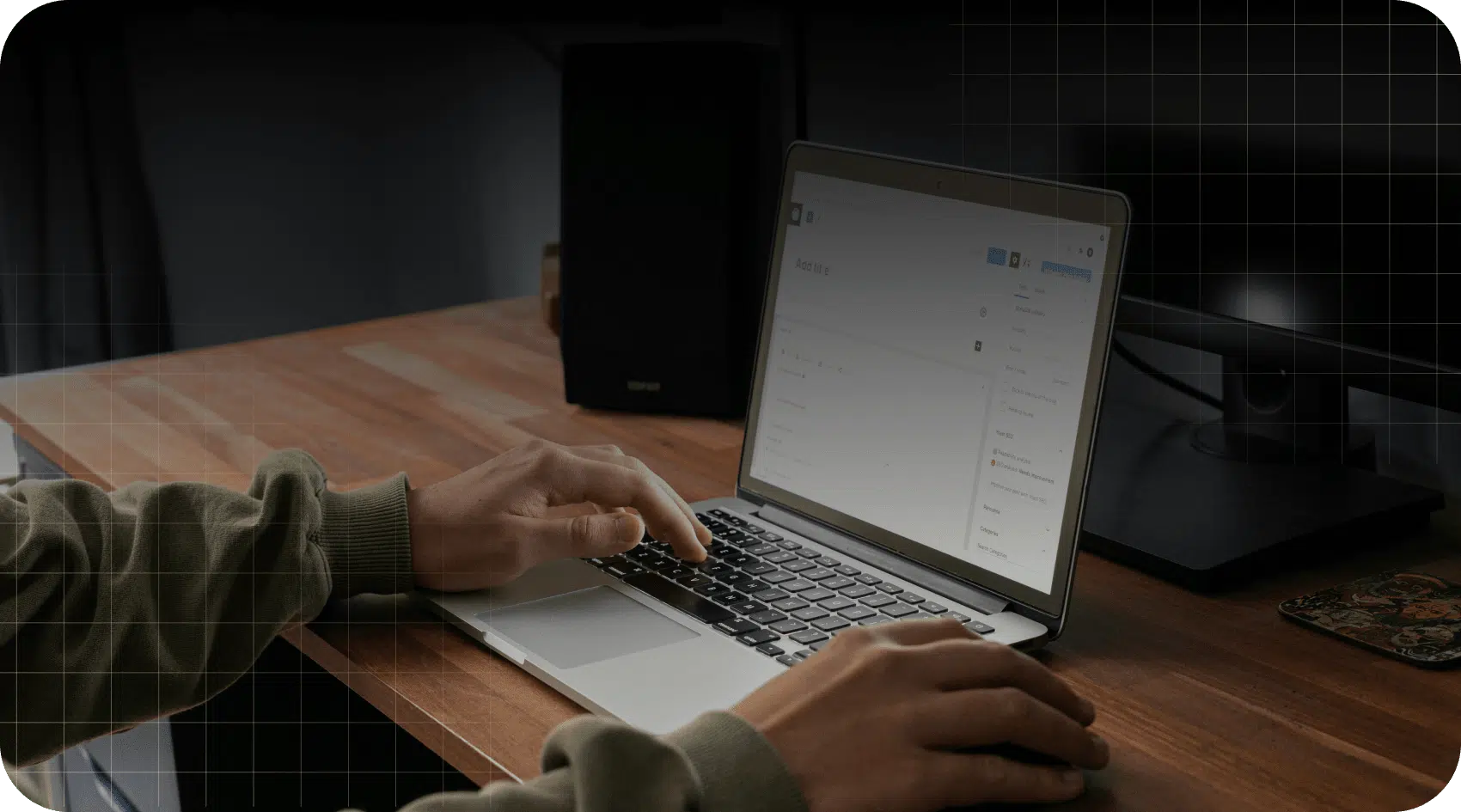Home / AP Automation / PO Matching
Built-In Two- and Three-Way PO Matching
Match purchase orders, invoices, and receipts to take the guesswork out of approvals so you stay policy compliant and avoid overspending or fraud.
PO Matching Features
Configure Personalized PO Policies
With Tipalti, purchase order processes work for you and save time. Enjoy greater compliance with your company’s purchasing policies. All invoice data goes through Tipalti AI Scan, auto-coding, and approval workflows before payment processing. This level of automation software integration simplifies the invoice verification process across your ERP system and accounting system, helping your accounts payable team reduce manual steps.
- Set up rules to determine if an invoice is PO-backed and if it should go through the matching process
- Base rules on the supplier or bill amount
- If an invoice has a purchase order, the PO bill coding data pre-populates the invoice
Automate Two-Way and Three-Way PO Matching
Automated PO matching reduces the delays of manual PO matching, improves invoice accuracy, and keeps your data clean before payment. Tipalti supports two-way matching and three-way matching to help prevent overspending. Even if an invoice is automatically matched, you can still require additional approvals before processing payment.
- Matches headers and line levels
- Aligns currencies, units of measure, landed cost, and more
- Supports multiple POs against one invoice and vice versa
Set Tolerance Ranges That Work for Your Business
Want more flexibility? Rather than manually reviewing all mismatches between invoices, purchase orders, and receiving reports, you can create tolerance thresholds based on amounts or percentages and the bill or line level. That way, invoices are still considered “matched” if they’re within the threshold. AI-powered invoice approval uses AI in PO matching to reduce time-consuming reviews and minimize discrepancies, without losing control.
- Improve first-time match rates to cut costs
- Gain insights into exceptions with a color-coded and intuitive interface
- Reduce the number of exceptions requiring further investigation
Easily Manage and Reconcile Exceptions
Exception reconciliation has never been easier or more intuitive. Tipalti shortens cycle time from invoice receipt to payment and maximizes discount opportunities. Plus, discrepancy resolution is simplified with automation software that accelerates the match invoice workflow.
- Clear highlights of exceptions, where they occur, and steps to resolve them
- Configure exception approval rules, so the buyer can approve or reject directly via email without logging in to Tipalti
- If the exception exceeds the threshold, AP can dispute the bill or the PO can be updated in the ERP system
Elevate Inventory Management
Product-based companies can streamline PO matching with inventory management for accurate tracking and payments. Implement a scalable PO policy across suppliers to eliminate overspending and strengthen financial control. Invoice purchase order workflows involving goods or services are optimized through integration with supplier invoices and ERP systems.
The following features are available for NetSuite users:
- Optimize prepayment workflow with seamless ERP integration.
- Support invoices for items with inventory details, such as serial numbers and locations.*
- Streamline three-way PO-matching for dropshipping invoices when selling products without maintaining inventory.*
Frictionless Approval Cycle
Exception approvals on purchase orders are easy. Any exceptions that exceed established thresholds can be sent for immediate approval through email and approved or contested with a single click. This seamless integration keeps exception handling and invoice approvals aligned with your ERP and accounting system.
Integrations
Pre-built connections to extend automated workflows
Easily extend and simplify your workflows with pre-built integrations and powerful APIs for your ERPs, accounting systems, performance marketing platforms, HRIS, SSO, Slack, credit cards, and more.
Testimonials
Don’t just take our word for it,
see what our customers are saying
Customer Stories
Explore our customer success stories
How It Works
Up and running in weeks, not months
Collaborative customer support with customized onboarding to get you operational quickly
Step 1
Plan
Kickstart your success with a comprehensive setup call that reviews your manual AP workflow, outlines the onboarding plan, validates technical configurations, and prepares for training.
Step 2
Configure
Tipalti’s implementation experts set up your hosted portal, create sample payment files, configure payment options and email integrations, and establish ERP integrations using our pre-built solutions.
Step 3
Deploy
In-depth training for AP staff on the Tipalti Hub and the end-to-end AP automation functionalities, ensuring thorough knowledge transfer to turbocharge your successful launch.
Step 4
Adopt
Support user adoption and change management during launch while guiding suppliers through onboarding. Once set, you’ll be ready to execute your first payment run and officially launch Tipalti.
Step 5
Optimize
Continued technical support by phone and email. Tipalti customer success team learns your goals and offers solutions to reach them.
Platform Features
Work smarter, not harder
With AI and machine learning capabilities, an intuitive UX, and quick and easy global payments, you can drive unprecedented efficiency.
Awards
#1 award-winning finance automation solution

2025 Inc. 5000 List of America’s Fastest-Growing Companies
Awarded to Tipalti for the 8th consecutive year

2024 Deloitte Technology
Fast 500
Awarded to Tipalti for the 7th consecutive year

2025 CNBC World’s Top Fintech Company
Awarded to Tipalti for the 3rd consecutive year
Leader in the IDC 2024 MarketScape
Worldwide Accounts Payable Automation Software for Midmarket

Ready to save time and money?
Book a demo to get started today and take control of your finance operations with Tipalti.
Invoice Matching FAQs
What is invoice matching software?
Invoice matching software is designed to streamline and automate the process of matching supplier invoices to corresponding documents like purchase orders, receipts etc.
Invoice automation software helps to ensure that payments are made only for goods or services that have been received and accurately billed.
Essential functions of this software include:
- Automated matching: includes three-way matching against POs and goods receipts based on pre-set rules and algorithms.
- Exception handling: uses artificial intelligence to identify discrepancies between invoices, POs, and receipts; then flags for extra review. It also recognizes non-PO invoices.
- Data extraction: is what some invoice management software systems use, including optical character recognition (OCR) to extract relevant invoice data by line item.
- Approval workflows: to route electronic invoices through predefined workflows, ensuring approval before payment.
- Top integrations: with other accounting systems and enterprise resource planning (ERP) platforms.
- Reporting and analytics: to provide insights into exception rates, validations, AP team performance, and more.
Depending on your business needs, many invoice matching software platforms can be customized to optimize the payable process.
What are the benefits of using invoice matching software in accounts payable?
Case studies from all over the globe have proven the many benefits of invoice matching software in accounts payable. Here are just a few:
Boosted Efficiency
Automating time-consuming, repetitive tasks naturally speeds up the invoice processing cycle. Eliminating manual processes allows finance teams to focus on strategy and growth.
Enhanced Accuracy
The right technology significantly reduces inaccuracies in the invoice matching process. This is particularly useful when AP is run using manual data entry by the payable team.
Cost Savings
Invoice matching software will minimize the risk of overpayments and duplicate payments, leading to potential cost savings. Faster payments also mean companies can take advantage of early payment discounts.
Improved Compliance
Invoice process automation ensures all invoices comply with company policies and regulatory requirements, reducing fraud and non-compliance risk.
Additional Benefits
- Real-time visibility into invoice status and payments
- Improved vendor relationships with better contract terms
- Supports scaling operations by handling increased volumes
What features should I look for in invoice-matching software?
When evaluating invoice matching software, it’s essential to consider features that will best meet your organizational needs and help to optimize your accounts payable process.
Here are some primary functions to consider:
Automated Three-Way Matching
Ensure your chosen software automatically matches invoices with purchase orders and goods receipts. This is the primary feature for reducing manual workload and errors.
Exception Handling and Resolution
The software should flag discrepancies between invoices, purchase orders, and receipts, and notify relevant users automatically. The platform should include a streamlined workflow for resolving mismatches, and the ability to assign tasks, track progress, and approve resolutions.
Data Extraction
The system should employ OCR to extract data from scanned or digital invoices.
Integration Capabilities
Invoice-matching software should provide seamless integration with your existing ERP and accounting systems, which is essential for data flow and reporting.
Real-Time Reporting and Analytics
Features should also include customizable dashboards to provide an overview of invoice processing status, exceptions, and critical metrics.
What is the difference between 2-way and 3-way PO matching?
2-way and 3-way PO matching are standard methods used in invoice processing to verify that payments are made correctly and only for goods or services ordered and received.
Here’s a breakdown of the differences between the two:
2-Way PO Matching
This involves comparing the purchase order to the vendor invoice. The primary purpose of 2-way matching is to ensure that the invoice details match the purchase order information.
2-way PO matching is often used when purchasing services (e.g., consulting) without a physical receipt of goods. It’s also suitable for straightforward transactions where the risk of discrepancies is low or physical receipt verification is unnecessary.
3-Way PO Matching
This involves comparing three documents: the purchase order, invoice, and goods receipt (receiving report). The primary purpose of 3-way matching is to ensure that the invoice matches the PO and that the goods/services billed were received in terms of quality and condition.
A 3-way PO is commonly used for purchases involving physical goods where verification of receipt is critical. It’s also used in scenarios where the risk of discrepancies is higher, such as with expensive, high-volume, or complex purchases.
How do tolerance ranges work in PO matching?
The tolerance range in PO matching defines the acceptable level of discrepancies between documents, such as the purchase order, invoice, and goods receipt.
A tolerance range provides flexibility to accommodate minor variances in quantity, price, or value without requiring manual intervention for every slight difference.
There can be different types of tolerance ranges as well, including:
- Quantity tolerance
- Price tolerance
- Value tolerance
- Shipping tolerance
How does it work? When an invoice is received, the system automatically compares it against the corresponding PO and goods receipt. This matching process includes checking whether any discrepancies fall within the predefined tolerance ranges.
If the discrepancies (in quantity, price, value, etc.) are within the set tolerance range, then the invoice is automatically approved, and payment processing continues without any manual intervention.
The invoice is flagged for further review if the discrepancies exceed the defined tolerance range. This triggers a workflow where someone manually investigates the discrepancy, contacts the supplier, or decides about approval or rejection.
Recommendations









